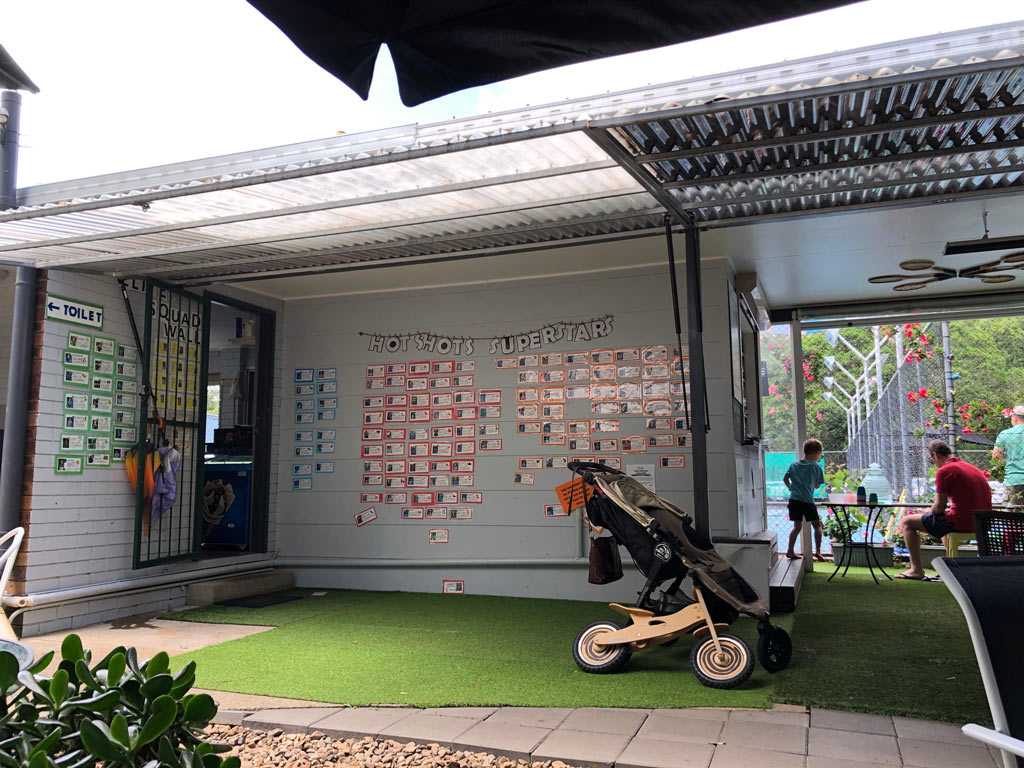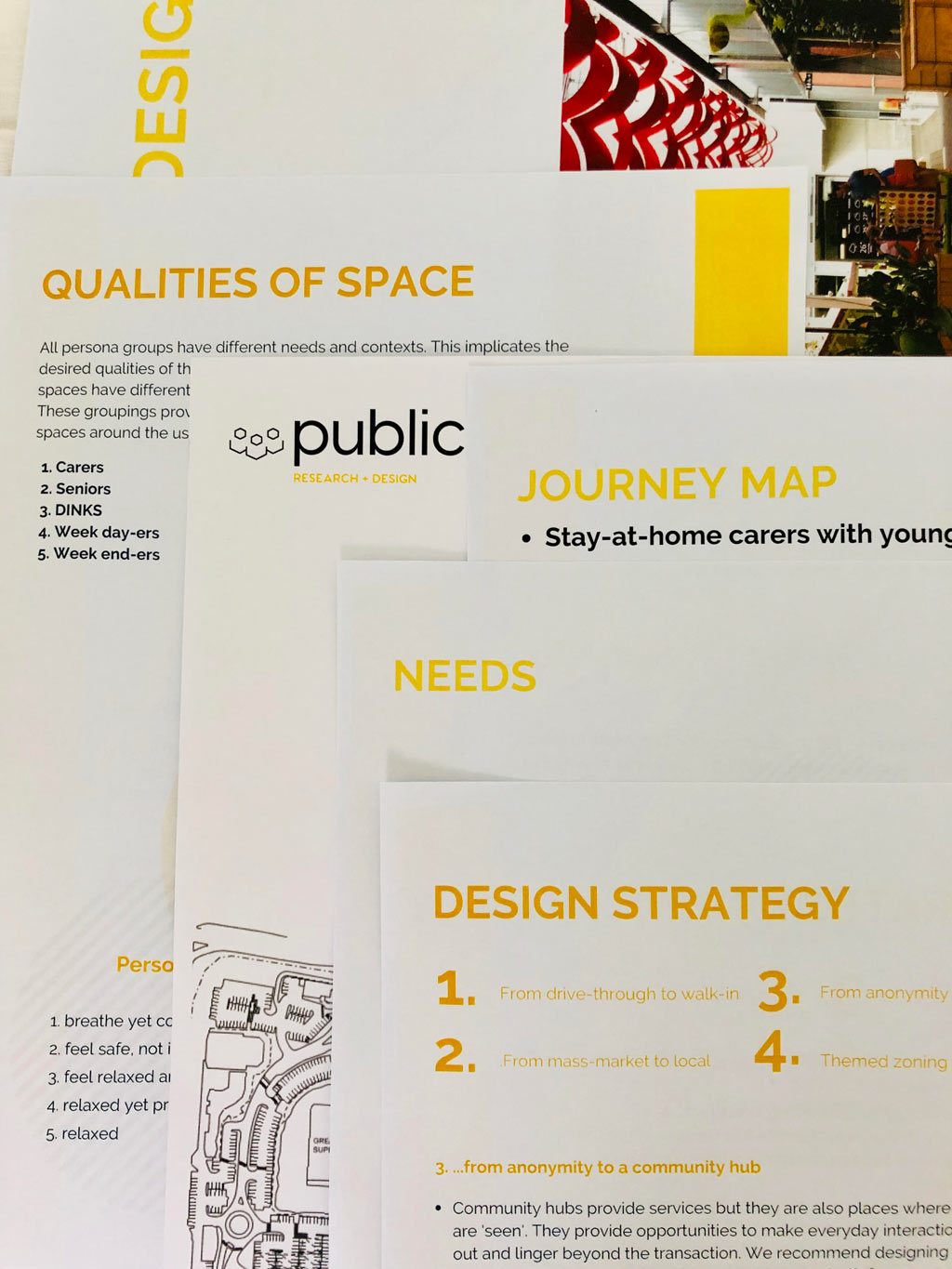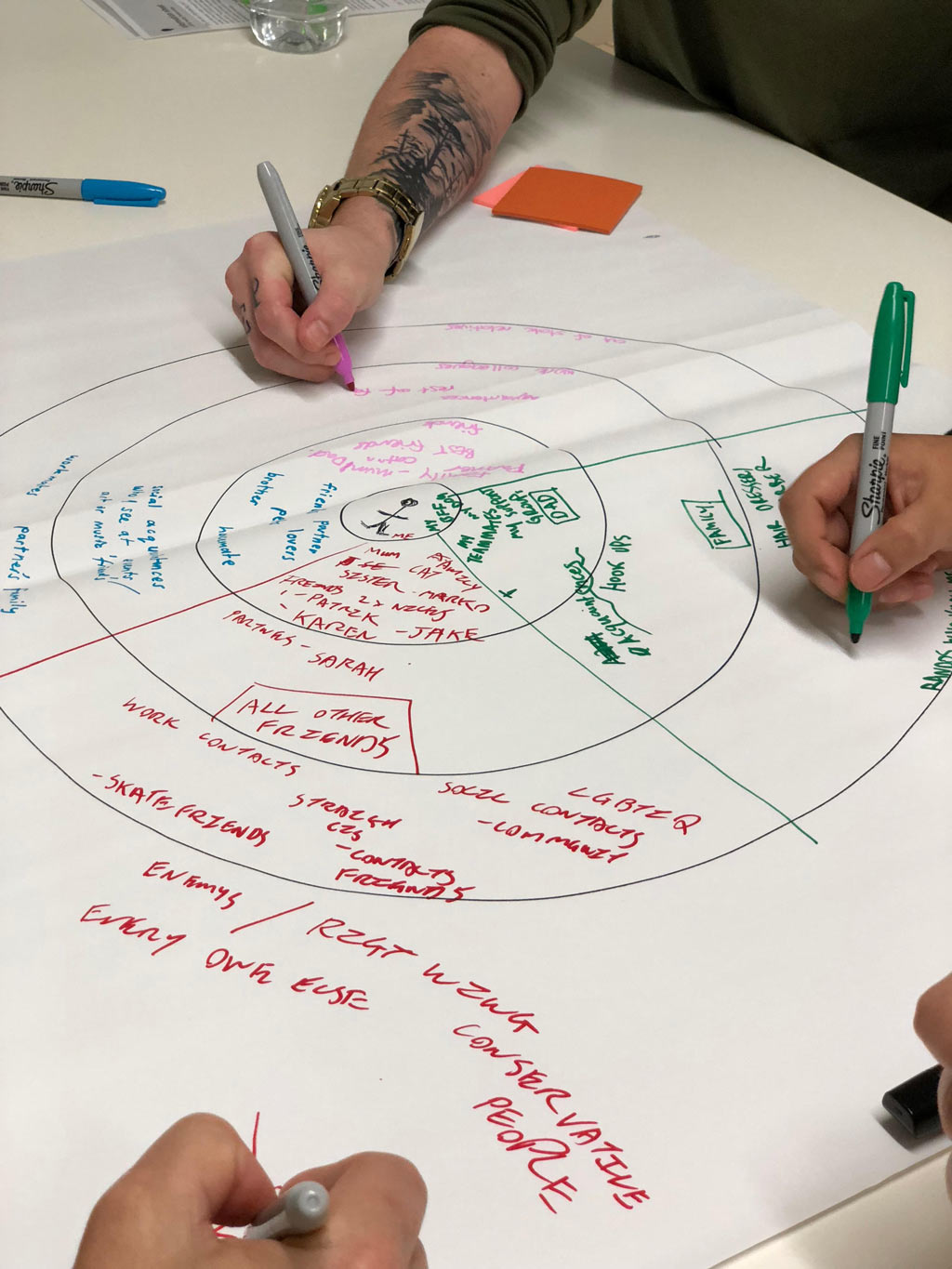Lena Belin On Improving Spaces & Enhancing Lives With Interdisciplinary Design & Research
Dr Lena Belin is a co-founder of public, a research and design company working in space.
She brings 15+ years experience in social science research and human-centred design to the architecture, planning and development industry. An experienced consultant, she has delivered large-scale service-and experience design projects to Australia's largest organisations, and has helped them understand people in environments as diverse as public roads, retail, hospitals and museums.
Her goal at public is to open the conversation about what users can bring to a design process and how architects and developers can benefit from behavioural user insights in their work. She gets fired up about participatory design, anthropology and bringing back the human into our lived environments.
Lena shares her broad experience in the design sector and discusses opportunities for organisations to meaningfully engage with people, leading to stronger outcomes that make a positive difference to society.
Highlights from the interview (listen to the podcast for full details)
[Tom Allen] - Could you please share a bit about your background and what led you to a career specialising in design and social innovation?
[Dr Lena Belin] - Well, I'm a truly interdisciplinary research and designer. And I've crossed many disciplines in my time including information science, education, Cultural Studies, Anthropology and Social Psychology. I've migrated twice in my adult life.
Where from?
From Germany to Russia and from Russia to Australia. And I've had quite a few career tweaks as you can imagine. I was lucky enough to work on some pretty interesting projects, to do with research and design. For example, I worked on a yearlong project that investigated the coordination and team norms of architects and building teams, across Germany, Australia, the US and India.
In another role I was part of an interdisciplinary project team that designed and delivered the multimillion dollar redevelopment at the Australian Centre for the Moving Image. The exhibition that's now called Screen Worlds. I've also held senior roles in some well-known human centred design agencies in Melbourne and consulted to the largest organisations including government, across Australia, and so got to see the impact of design and social innovation. Like most interdisciplinary designers, I haven't always called what I do design, but it has become a really good vessel to explore things from different perspectives, across disciplines and ultimately, help achieve better outcomes for humans.
Excellent. So as co-founder of public, what sort of projects are you involved in? What sort of work do you do?
Public is an interdisciplinary research and design consultancy working in space. It's co-founded by me and my husband Edward, and we both bring very different professional perspectives to our work. So him having worked in the management of building design projects, and before that in data analytics, and me in the background of research and design. At public, we focus on human centred research and design with, and for users, and those that design spaces for them. And we work with developers, town planners and architects, or anyone else involved in space making, to make spaces more human centred for people. So we believe there's a great opportunity to innovate and develop the market, in a commercial or civic space. We also think that good people centred research and design can influence any stage of a project but really it's probably the most beneficial at the beginning.
So two of the projects that we’re working on at the moment are really at the beginning stage. The first one is a community centre/dining precinct in Brisbane that aims to create a gathering place for community in what is currently a rather transient suburb. We do upfront research around the types of users that will be visiting the centre and design services and experiences around their needs. The developers and consultant teams are also Brisbane locals, they’re called 26street design.
And it's a really rich collaboration where we work together to shape the design of the centre, as well as the services that go into it. This project will run for about 1 to 2 years, and there will be various stages, going from user research into service and experience design while involving community members along the way.
Another interesting project that we're working on at the moment is Australia's first Nightingale townhouse development.
Very exciting.
Yes it is. So Nightingale, quite well known by now, is a participatory led approach to creating sustainable housing, quite successful in Melbourne has won many awards there. Our clients an architecture practice called Refresh Design, were awarded by Nightingale the first licence in Australia to build townhouses using this model. So that’s very exciting because Nightingale in general and our clients in particular have a strong social interest in their approach when it comes to things like mixing different social groups to create community. So we're looking into options like providing specialist accommodation for people with disabilities, having a social enterprise coffee shop or similar on the site. Potentially a community garden or dog park. So the options are really exciting, and at the moment we're really helping them to scope out what are the options in terms of land, because it's quite tricky to find an appropriate site that would house enough people to make it viable. And we're really helping from the demographics perspective and that project we’ll be involved obviously for quite a long while. So once we have a suitable site, which is in the works at the moment, the user research really starts and then it goes from there identifying needs and working with the different groups to arrive at a design that will be beneficial for the users, in that place but also for the community in large.
So such an exciting project. I think there has been a really strong move towards co-living and that's sharing model around the world; I saw a lot of it over in the Netherlands as well. But through your research, what have you found to be some of the biggest problems that emerge in the design of these sorts of public spaces?
The biggest problem that we see, is one of really ingrained practices, (that must be for commercial reasons), [where they] create spaces that don't involve the user in the design process in a meaningful way.
So there is what's called community consultation, which is mandated, but it's really more a pro forma process often, unfortunately, that often comes too late and doesn't really shift the power to the user. And again there's commercial reasons for that, because the developer carries all the financial risk. So it's fair enough that they have more control over it. So the interesting question, I guess, in the developer space and the architecture space, is how can we distribute the risk and how can that be reflected in the financial models?
So how can the banks actually think about risk in terms of financing large scale projects? So it's not just about the developer, but it's a chain of things that need to be tweaked and worked at I think. My co-founder Edward has a background in working on large scale public sector projects, such as hospitals and health centres. And he's often encountered a lack of capability on behalf of the project team, to involve evidence of the user experience, so be that through research or co-design. So it's not just the co-designing, but also even using evidence from the user’s experience, that it’s considered a valid thing. And to build that into a design process, that can be challenging. So costs, of course are critical, but sustainability is becoming more and more important. And then earlier I mentioned sustainability. Sustainability that involves considering the human is, we believe, becoming more and more important for the future of all our building environments.
So what have you learned in your previous roles as a designer about effectively engaging in designing alongside communities in order to tackle complex issues that might arise, or complex issues that exist in communities?
In my work as a designer, I've had the privilege to work with a broad range of organisations, and in particular I've been working with many government organisations who are trying to change really complex systems, like education or health.
It's often difficult for large organisations to engage in design with communities in meaningful ways because there's ingrained ways of working and thinking, that need to be challenged and shifted.
They’re enforced through the silos in organisations, but also through the education system; so how things are taught at school or at university. Architecture training’s a good example actually.
So there's a very strong discipline behind architectural practices, but truly interdisciplinary ways of working are still emerging as a normal way of doing things as an architect.
So in particular bringing in people from fields like psychology, or anthropology, is still unusual. And that then leads to a certain way of practicing architecture.
So having an interdisciplinary background myself, I know how important and valuable it can be in the design process, but practising it at an organisational level, is still something that organisations are grappling with in my experience.
Personally, what I've learned from working with communities and complex problems, is that human centred design can really make a difference when done well, with integrity, and when it's embedded in a system, and a way of working on a project or in an organisation.
I think sometimes though we can get carried away with large complex problems, that take years and decades to tackle, and forget that there are quite tangible things, that we all can do today, to make things better.
So at public, we really carry that sense of optimism, that everybody can make a difference to society by taking a human centred approach, and that everybody, not just government, has an opportunity to change things for the better. And that includes the private sector, which is why are we interested in that nexus between the private developer and the public space and how that intersects. So that's why we are working together with partners in industry, as well as in public space.
So throughout that human centred design process, are there any processes, tools, or methodologies that you commonly use, and have found really helpful?
Great question. I think over time every practitioner develops their own toolkit, but it really depends on the projects and the problem you're trying to address. We’re an interdisciplinary team and compliment each other in terms of the processes and methodologies we use for our work. So between us, we will use demographic and other descriptive data and model that in different ways to understand the user groups that we need to consider in the design process. But then we get on the ground and conduct ethnographic research which involves a number of observational methods, as well as direct engagement with people through interviews. That gives us a lot of important data on the site itself, but also its context in the location that it's in, and what needs or constraints the community has, so the larger space around a particular site. So in the later stages of the design process, we do co-design work with future users and community members, and that then leads us into service and experience design itself. So overall we're involved very early in the design process, and our knowledge and methods compliment really well with the work that the other consultants like the architects do.
So have you come across any really common reasons that participatory design projects might fail?
I think it's often in the capability of organisations to really listen and to apply the feedback, that community gives.
So again they’re seated economic and policy models that underpin a way of thinking in our society at large that requires strong leadership to be shifted. And that's not just in the developer and architecture space, that's in general.
It's simply not everyday practice yet to involve people along the way in design decisions.
But I think people are recognising more and more that this is what's needed.
So it's really, I think, up to us as members of communities to hold leadership accountable for working in inclusive and participatory ways, and to keep on practising these new ways of working.
So what advice then would you give to the budding social innovators out there listening, who are keen to contribute to tackling inequality in our communities?
I'd say that pushing the social innovation agenda is important, for the reasons I've just mentioned before.
But I also think it's important to learn how current systems operate, so that you can change the system from within, and work with the people who are in it and can bring them on board.
At public, we’re complementing professionals who have very established ways of working, such as architects, town planners, developers. We’re not questioning their processes, but instead we complement their work, through human insights that help them to do their job even better. So this way, social innovation is baked into the system, and just becomes a way of thinking and working, rather than a kind of, antagonistic provocation. So I think a mixture of a bit of provocation and a bit of added value or added benefit to people’s work is probably where it’s at.
You've been working in design and innovation for a while now Lena. So how have you seen this social innovation movement transform and change over the last five years or so, and where do you see it heading?
I can probably best comment in the context of design and social innovation, and I've seen them professionalise over the last couple years. That's great.
It's become less exotic to work as a designer in social innovation and organisations are more and more adapting a social innovation mindset, or at least undertaking steps, to integrate it more into core business.
Certainly we've seen it with our clients who are well established in their fields, and more and more they feel the need to consider the social effects of the buildings that they put out into the world, not just the commercial effects. At public, we're trying to build on this notion, shaping, and contributing to the conversation on participatory design, and we certainly think it's going to become more and more important.
Are there any other inspiring projects that you've come across recently that you believe are creating excellent positive social change?
I was going to put in a shameless plug here... I have to say I'm pretty excited about the Nightingale work starting out in Queensland, and the possibilities that this has to set a precedent in how communities can be involved, in the future in shaping our built environment. But I'm also inspired by some other local projects popping up in the accessibility space.
So at the recent Brisbane Innovate event, the CEO of Youngcare, Anthony Ryan, shared some details of their partnership with Lancini Property Development, and how they had found an innovative business model that would allow young people state of the art housing, and eventually home ownership.
Everyone in the audience was really touched by that story, and to me that was really such a great example of innovation, not just in the design process itself, but going back to the business model, which is where I think a lot of these ingrained ways of thinking and structures can really be changed. So when someone like that who comes from a very established property development background says, ‘hey, actually let's try something new, and it's working for us and for the user,’ that's really exciting. So I think we need more examples like this where private sector organisations partner with social services organisations, and deliver accessible housing for all abilities.
Excellent. So to finish things off, do have a few interesting books you could recommend?
I've got a few that I can think of. The first one is called ‘Architecture is Participation’ by Professor Susanne Hofmann. The other one I'd recommend, if you're just starting out in the design space, is ‘This Is Service Design Doing’ by Marc Stickdorn, and a couple of other authors.
It is pretty new really. It’s only a year or so old.
It is pretty new and is the followup from ‘Service Design Thinking’. And this one's really good; very practical with different case studies with architecture in there as well. And it’s got some really nice breadth too now that service design is a bit more of an established practice. And my final one would be ‘This Human’ by Melis Senova, which is just a nice lovely exploration of the human qualities, and mindsets, that it takes to do human centred design and innovation well. And there is a bonus one, that I have got, that is unrelated to design, but it’s accompanied me throughout my life and that's the short stories of Anton Chekhov, a 19th century Russian novelist, and he dissected really the human psyche in a depressing and accurate way as only Russians can.
Initiatives, resources and people mentioned on the podcast
Recommended books
Architecture is Participation by Professor Susanne Hofmann
This Is Service Design Doing by Marc Stickdorn
This Human by Melis Senova









